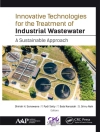The Chernobyl Nuclear Power Plant (NPP) disaster that occurred in Ukraine on April 26, 1986, was one of the most devastating in human history. Using this as a case study, the AGU monograph Groundwater Vulnerability: Chernobyl Nuclear Disaster is devoted to the problem of groundwater vulnerability, where the results of long-term field and modeling investigations of radionuclide transport in soil and groundwater, within the Ukrainian part of the Dnieper River basin (Kyiv region of Ukraine), are discussed. The authors provide a comprehensive review of existing literature on the assessment of groundwater vulnerability and then describe an improved methodology, which is developed based on integration of the methods of hydrogeological zonation and modeling of anomalously fast migration of radioactive contaminants from the land surface toward groundwater. This volume also includes the evaluation of the effect of preferential and episodic flow on transport of radionuclides toward the aquifers and risk assessment of groundwater vulnerability, which can further assist future researchers in developing remediation technologies for improving drinking water quality. Further, this volume sheds light on the consequences of groundwater contamination from nuclear disasters and assists with assessing the risks associated with contamination and developing effective remediation technologies.
Volume highlights include discussions of the following:
- Assessment of groundwater vulnerability to contamination from the Chernobyl nuclear disaster
- Novel analytical results of the 25-year investigations of groundwater contamination caused by Chernobyl-born radionuclides
- The wealth of data on different modes of radioactive transport in the atmosphere, water, and soils, and along the food chains
- The hydrogeological and physico-chemical processes and factors in groundwater contaminated zones
- The applicability of commonly used methods of the evaluation of groundwater vulnerability
- A unique method of fluid dynamics that involves an anomalously fast migration of contaminants through zones of preferential flow from the land surface toward groundwater
- Building confidence in the assessment of migration pathways of radionuclides in the biosphere
- Assessment and prediction of the consequences of the nuclear accident, which can shed light on protection from global nuclear accidents
- Analogue information for different nuclear waste disposal and environmental projects around the world
Содержание
Abstract v
Introduction: Importance of Lessons Learned from Assessment of Groundwater Vulnerability at Chernobyl vii
1. Methods of Groundwater Vulnerability and Protectability Assessment 1
1.1. Method of hydrogeological zoning 2
1.2. Index methods 3
1.3. Parametric methods 9
1.4. Modeling methods 19
2. Chernobyl-Born Radionuclides in Geological Environment 25
3.Preferential Flow and Migration Zones in Geological Environment 39
3.1. State of problem study 39
3.2. PFMz classification and occurrence 41
3.3. Methodological approaches of PFMZ study 47
3.4. Indicators of PFMZ activity in depressions 53
3.5. Preliminary evaluations of PFMZ influence on upper groundwater 57
3.6. Practical importance of PFMZ 60
4. Methodology of Groundwater Vulnerability and Protectability Assessment 65
4.1. General consideration 65
4.2. Vulnerability and protectability assessment for upper groundwater (Unconfined Aquifer) 70
4.3. Vulnerability and protectability assessment for confined aquifers 73
5. Groundwater Vulnerability and Protectability to Chernobyl-Born Radionuclide 81
5.1. Upper groundwater 81
5.2. Confined aquifers 93
6. Summary 101
References 105
Index 115
Об авторе
Boris Faybishenko is a scientist in the Hydrogeology Department of the Earth Sciences Division at the Lawrence Berkeley National Laboratory. His research focuses on environmental protection, bioremediation, natural attenuation, long-term monitoring of contaminated areas, and optimization of coupled energy-water systems under present-day and future climatic conditions. He has authored and co-authored about 60 peer-reviewed scientific papers, 11 books and book chapters, 80 abstracts of scientific presentations, more than 50 reports, and 8 patents.
Thomas Nicholson is the Senior Technical Advisor at the Office of Nuclear Regulatory research in the US Nuclear Regulatory Commission.
Vyacheslav Shestopalov is an academician in Geology and Mineralogy at the National Academy of Sciences of Ukraine (NASU) and is the Director of Radio-Environmental Center of NAS of Ukraine. He is also the Deputy Director for Science at the Institute of Geological Sciences in NASU. His current research focuses on the evaluation of protectability and vulnerability of major drinking groundwater horizons within northwestern part of the Dnieper artesian basin in Russia.
Alexander Bohuslavsky is the Director of Radioecological Centre, National Academy of Sciences of Ukraine and the Deputy Director of the Institute of Geological Sciences, National Academy of Sciences of Ukraine. He is a member of the American Institute of Hydrology (AIH), Hydrotechnical Section of Scientific-Technical Council of Ministry of Energetics of Ukraine, and he also serves on the permanent Commission on Minimisation of Consequences of Chernobyl Accident, and on the Presidium of National Academy of Sciences of Ukraine as the Vice-Chairman.
Vladimir Bublias is a Senior Scientist in Hydrogeology at the Radioecological Center in the National Academy of Sciences of Ukraine.












